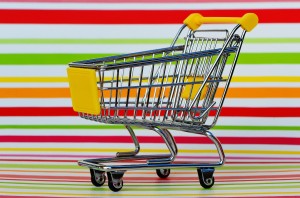 Wal-Mart, an early adopter in digital market basket analysis, determined back in 1997 that people who purchased a Barbie doll in their stores were more 60% likely to also buy one of three different candy bars. If we suppose that this information was determined around the holiday season when Barbies are selling like hotcakes, retailers will want to take quick advantage of the situation so they can increase their profit. Correlating this data manually takes time, which is why decision makers need custom dashboards that brings all the consumer checkout data together in meaningful ways, allowing them to make decisions on the fly that otherwise would have taken days or weeks.
Wal-Mart, an early adopter in digital market basket analysis, determined back in 1997 that people who purchased a Barbie doll in their stores were more 60% likely to also buy one of three different candy bars. If we suppose that this information was determined around the holiday season when Barbies are selling like hotcakes, retailers will want to take quick advantage of the situation so they can increase their profit. Correlating this data manually takes time, which is why decision makers need custom dashboards that brings all the consumer checkout data together in meaningful ways, allowing them to make decisions on the fly that otherwise would have taken days or weeks.
The most intelligent way to optimize checkout data is to have it appear in a dashboard that showcases how different products are selling by category, time of year, day of the week etcetera. By visualizing this data, patterns may emerge that would not have been otherwise apparent – for example, visualizations can be used to view the planogram of a store, allowing retailers to see, using a traffic light colour scheme, which products are selling well on which shelves, and therefore determine the optimal layout of the store. Retailers can then use tools like Prism to map consumers’ path through a store, and using that knowledge plan the layout of the store in such a way that items that are often bought together will be passed by on any given shopping trip.
Now suppose you combined the market analysis reporting tool with your store’s planogram with a tool such as IntelliSite into one handy dashboard – all of a sudden you have the ultimate decision making tool at your fingertips. With a single click on a store shelf you can see the sales data for any given product, discover affinities for that product with other products, develop combo offers based on those affinities, and even allow the software to automatically recommend inventory purchasing for items based on item affinity. It’s all about delivering the right product at the right quantity at the right place and time.
Dashboards such as this are well within the reach of any medium to large size retailer, and are the key to deriving actionable insights from your data. All it takes is a savvy BI partner with experience working in retail analytics to help make sense of your data. In the next blog of our retail series, we’ll discuss how you can develop apps for store reporting that will add yet another valuable layer to your retail strategy.
More Blogs on Retail:
1. The Value of Dashboards for Store Reporting
2. Market Basket Analysis and Planograms
3. Privacy and Consumer Data
4. Personalizing the Shopping Experience

